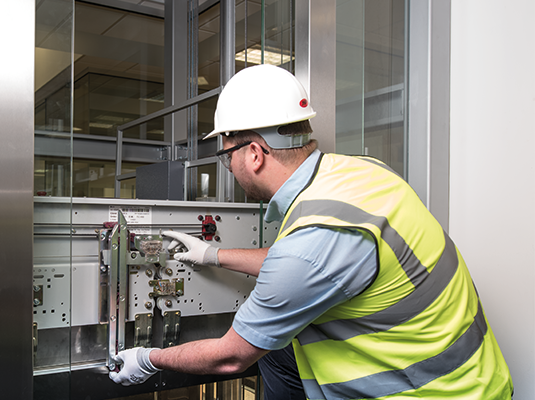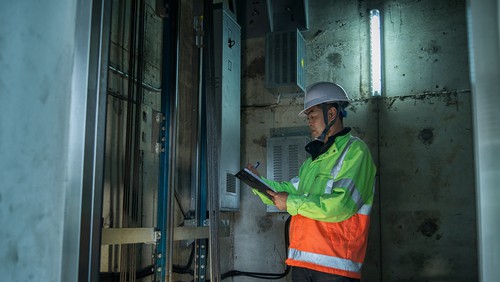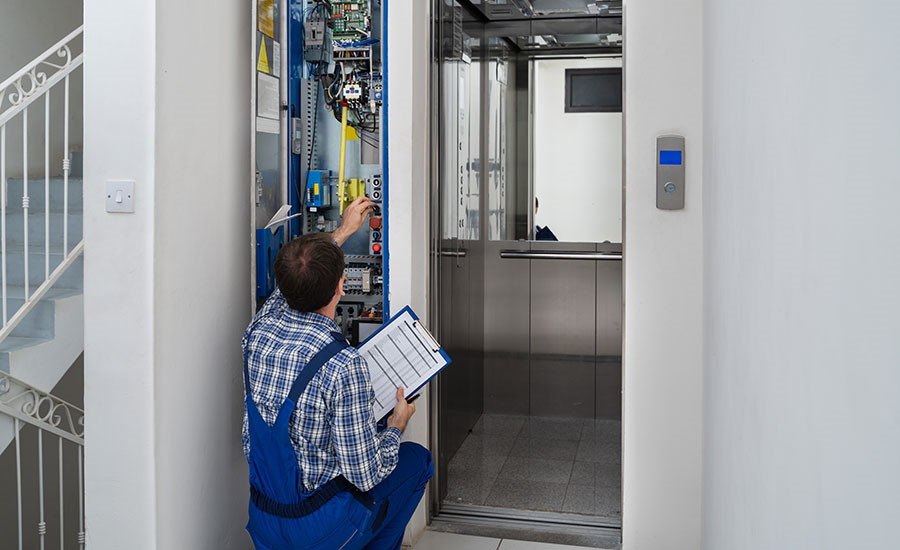Crucial Guide to Comprehending Disabled System Lifts and Their Capability
Comprehending the complexities of impaired platform raises goes beyond mere recognition; it requires a thorough grasp of their performance and design. From the different kinds offered to the crucial elements that make them functional, each aspect adds to the seamless operation of these vital access tools. The strict safety and security policies and maintenance considerations connected with platform lifts are critical in guaranteeing their dependability and durability. By checking out these facets in detail, one can acquire an extensive understanding of exactly how these lifts not just enhance availability yet also focus on customer safety and benefit.
Kinds Of Disabled System Lifts
There are a number of sorts of impaired system raises created to offer access for people with flexibility obstacles. Vertical platform lifts are a preferred selection as they relocate directly up and down, making them suitable for shorter ranges and where room is restricted. These lifts are usually mounted in homes, institutions, and industrial buildings to help mobility device individuals in navigating different degrees. Inclined platform lifts, on the other hand, appropriate for places where a vertical lift might not be practical due to architectural restrictions. These lifts follow the slope of stairways, giving a smooth and risk-free ride for people with wheelchair issues.
An additional kind of impaired system lift is the mobile lift, which provides adaptability and convenience. These lifts can be quickly relocated from one location to an additional, making them perfect for short-lived events or circumstances where an irreversible installation is not feasible. Additionally, outside system lifts are made to endure varying climate problems, allowing individuals to gain access to outdoor areas easily and independence. Each type of handicapped system lift serves an unique purpose in enhancing availability and boosting the top quality of life for individuals with wheelchair obstacles.
Secret Parts and Systems
Disabled platform lifts, such as upright and inclined lifts, rely upon details vital elements and systems to guarantee smooth and secure transportation for people with flexibility obstacles. One crucial part of these lifts is the system itself, which acts as the structure for moving people - elevator maintenance. The system is made to be sturdy, large enough to suit wheelchairs or movement devices, and outfitted with safety features such as guardrails and non-slip surface areas to avoid mishaps throughout transportation

In addition, safety sensors and emergency situation quit buttons are integrated into impaired platform raises to boost user safety and stop accidents. These components collaborate to produce a trustworthy and reliable transport solution for individuals with wheelchair disabilities.
Installment and Upkeep Factors To Consider

Normal maintenance is just as essential to keep impaired platform raises running efficiently. Arranged inspections, lubrication of relocating parts, and screening of safety functions ought to be accomplished according to the maker's recommended routine. Any signs of wear and tear must be dealt with without delay to avoid more damage and guarantee the lift runs dependably. In addition, having a maintenance log to track service background and treatments can assist in identifying patterns and prospective concerns before they rise. By prioritizing appropriate installment and persistent upkeep techniques, the longevity and efficiency of disabled platform lifts can be taken full advantage of, profiting both users and center managers.
Security Functions and Laws
Making certain compliance with safety policies is vital when reviewing the performance of security attributes in impaired system lifts. These lifts undergo details safety and security standards to secure customers, making it critical for suppliers and drivers to follow these guidelines. Safety features commonly found in impaired system lifts consist of emergency situation quit switches, security barriers, interlocks, and under-platform sensors. Emergency situation quit buttons permit prompt stopping of the lift in situation of an emergency, while safety barriers protect against individuals from accidentally diminishing the system. Interlocks guarantee that the lift doors are securely shut prior to the lift operates, boosting customer security. Under-platform sensors spot blockages beneath the lift, preventing it from coming down important link if an object is in the way. In addition, routine maintenance and examinations are needed to make certain that security features are operating correctly and in conformity with policies. By prioritizing security features and sticking to regulations, handicapped platform lifts can provide safe and effective transportation for individuals with disabilities.
Benefits of Using System Lifts
Conformity with safety guidelines and the execution of important security features in handicapped platform lifts contribute to the total benefits of using these lifts for people with impairments. Beyond safety and security, system lifts provide an array of advantages that enhance access and benefit. Overall, the ease, self-reliance, and inclusivity facilitated by system raises considerably improve the top quality of life for individuals with handicaps, making them an indispensable accessibility option.

Final Thought
In final thought, handicapped platform lifts come in various kinds with crucial parts and systems that allow for risk-free and reliable operation. The advantages of making use of system lifts consist of boosted ease of Resources access and independence for individuals with specials needs.
Comments on “Advanced Lift Modernization-- Upgrade Your Lifts for Better Efficiency and Security”